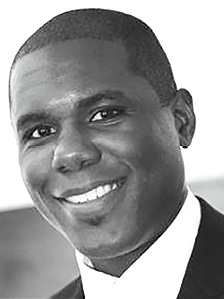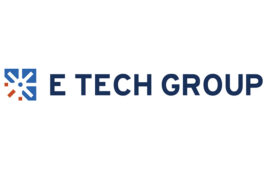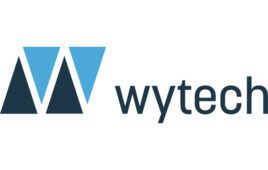The infiltration of apps into everyday life—and everyday healthcare—has fostered many new opportunities for medical businesses. Apps are programs that run on cell phones and other mobile devices. There are many tantalizing prospects. They range from being able to develop new and supportive app products that boost patient care to those that aim to help identify health issues before they become more serious problems. While these apps primarily exist to make increasingly complicated modern-day lives easier, they can also present challenges with issues of regulatory obligations, necessary testing and trials, correct usability, privacy, security, and more.
Mobile health apps-or mHealth-apps are those that monitor health-related readings. These include blood pressure monitors, heart-rate meters, and other measuring devices, as well as apps that help maintain and store data input by users to monitor readings taken on other devices or in other ways. It can be confusing trying to understand when a mobile app leaps from a general wellness to a medical device, even though the FDA recently published guidance to help industry navigate the regulatory landscape.

Delmar Howard |mHealth Program Manager | Intertek |Delmar Howard |mHealth Program Manager |Intertek |
Apps that are medical in nature and directly or indirectly involved with the treatment of a person in medical care are governed by the U.S. Food and Drug Administration (FDA), under its 510(k) and Premarket Approval (PMA) regulations. When the FDA thinks an mHealth app has crossed into medical territory, the app and its development company are subject to all the required regulations under 510(k). A subsequent investigation can required the developer to pull the application from the marketplace.
Potential consequences
For example, a urinalysis app created by a non-U.S.-based company drew the FDA’s attention when it launched in the U.S. market in early 2013. The app claimed it could help users determine their risk for a variety of medical conditions by taking a photo of an associated urinalysis chemical strip and analyzing the photo to make medical color comparisons. By crossing into medical diagnostic territory, the FDA decided the app and its associated strips were in medical care territory and thus needed to adhere to and be evaluated according to the 510(k) process.According to a letter from the FDA to the app’s development company, the dipstick strips associated with the app had achieved the proper FDA clearance, but:
“they are only cleared when interpreted by direct visual reading. Since your app allows a mobile phone to analyze the dipsticks, the phone and device as a whole functions as an automated strip reader. When these dipsticks are read by an automated strip reader, the dipsticks require new clearance as part of the test system. Therefore, any company intending to promote their device for use in analyzing, reading, and/or interpreting these dipsticks need to obtain clearance for the entire urinalysis test system (i.e., the strip reader and the test strips, as used together).”
Consequent to this letter, the associated company pulled that iteration of the app from U.S. availability and launched an online crowdfunding campaign to help it gain capital and user data to support its work in achieving the proper FDA clearance.
How to assure proper steps are taken
Typically, when the FDA makes a move that involves removing an app from the marketplace, they meet with the developer and urge them to put their product through the 510(k) clearance submission process, which aims to ensure the developer followed the proper guidelines in the development of a medical application. This typically requires the inclusion of third-party-conducted and -verified studies and data, as well as documentation on how the app shows substantial equivalence to a current medical device.
The urinalysis-app developer could have avoided its mishap by having a better understanding of the FDA’s regulatory requirements around medical apps. However, because few understand what makes an app a medical device (or what doesn’t), businesses looking to pursue these opportunities in the marriage of technology and medicine must work closely with regulatory advisors and testing partners. Itâs true that the FDA publishes guidance about what does and does not constitute a medical app, but it’s also true that regulatory experts are needed to interpret that guidance.This can include a gamut of trial and testing needs. Testing a medical app typically requires a regulatory expert to specify what and how much testing is needed based on their experience dealing with the FDA. Much of this testing is usually based on risk mitigation, but there can also can be extensive testing regarding the function and performance of the application. For example:
- How it may or may not be involved in treatment therapies according to physicians;
- How it compares to other medical devices that have achieved FDA 510(k) clearance;
- How any Health Insurance Portability and Accountability Act (HIPAA) regulations apply; and more.
Creating a test plan according to FDA recommendations and guidelines is the smartest way to help ensure a product successfully makes it to market.
The number of mobile apps that have acquired FDA 510(k) clearance is still relatively low, due primarily to the much more stringent requirements. Apps that obtain 510(k) clearance, however, often benefit from a heightened perception and marketability, although it does require a more significant time and monetary investment on the part of the app developer.
Government agencies continue to monitor this sectionâand intersectionâof the mobile and medical businesses. For instance, the FDA and the Federal Trade Commission (FTC) recently imposed fines on two melanoma risk-detection apps. Medical app developers should be aware that more restrictions and requirements could be imposed onto these kinds of apps at any time. In the development of a medically related app, companies should partner with regulatory and testing experts who know the FDA, are able to work within the system to meet all the needed requirements, and understand how to give a medically oriented app the best face in the medical marketplace.




